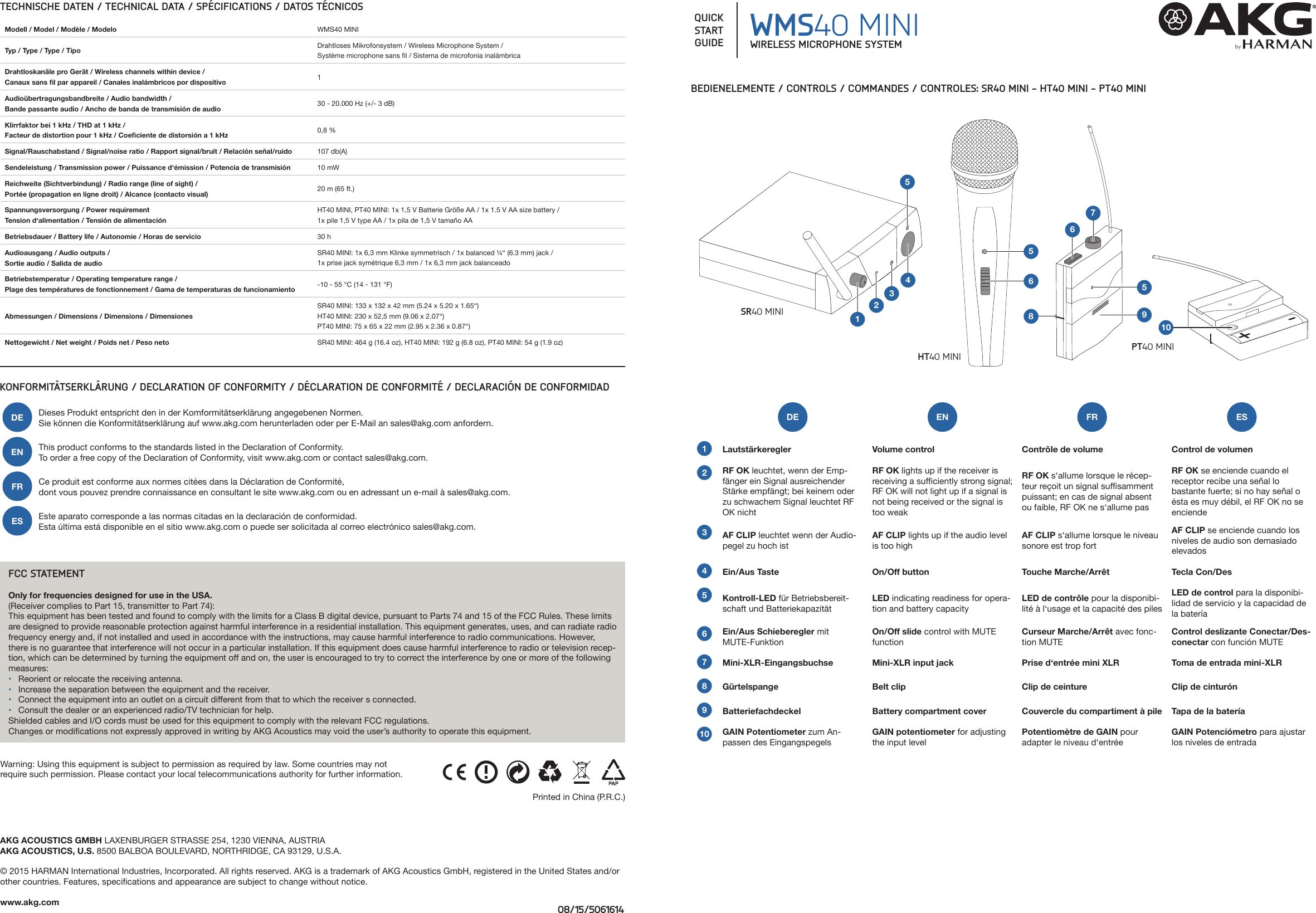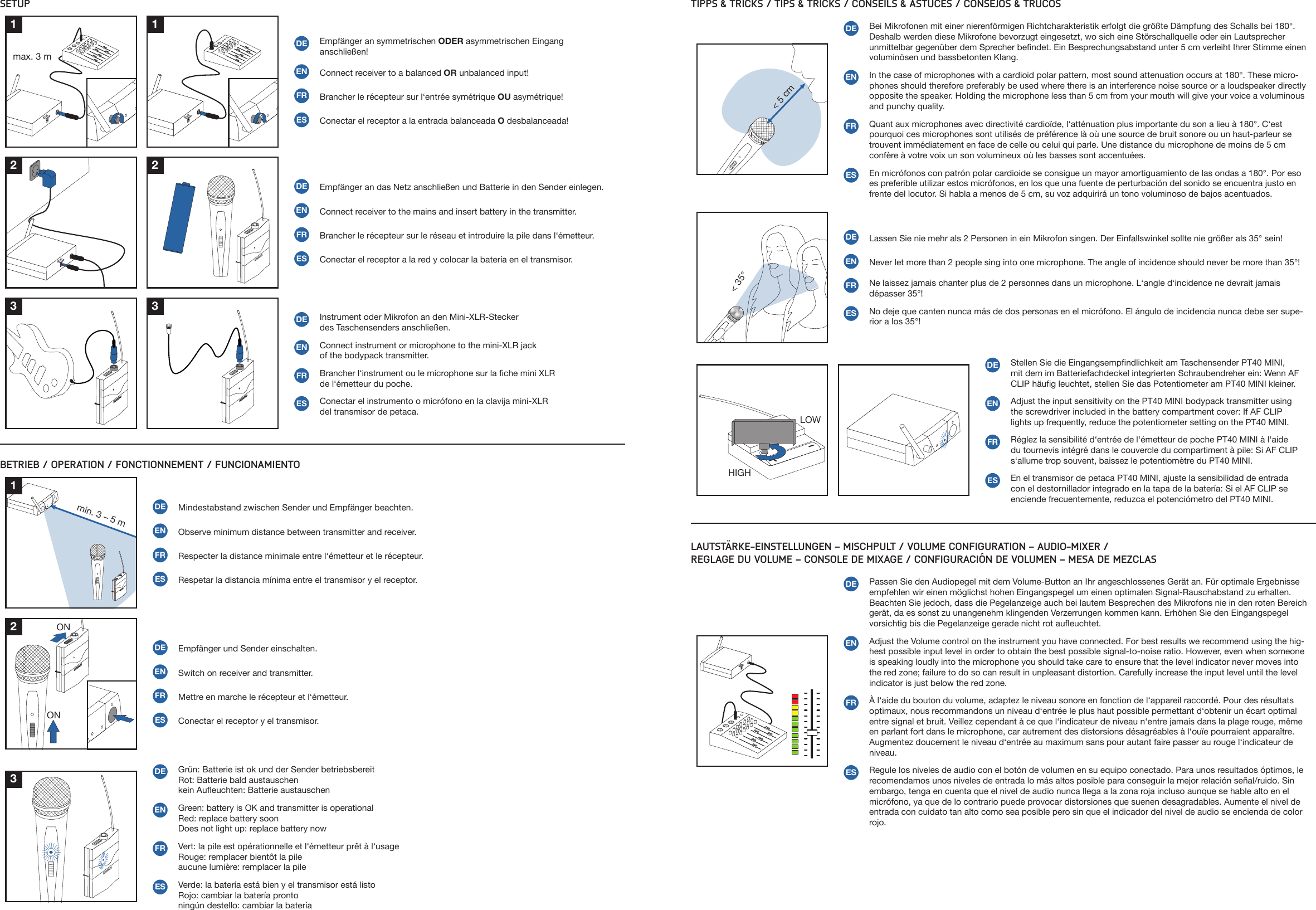AKG Acoustics PT4025M Body worn transmitter for wireless microphone User Manual Quick start guide for single receiver set
AKG Acoustics GmbH Body worn transmitter for wireless microphone Quick start guide for single receiver set
Contents
- 1. Quick start guide for single receiver set
- 2. Quick start guide for dual receiver set
Quick start guide for single receiver set

